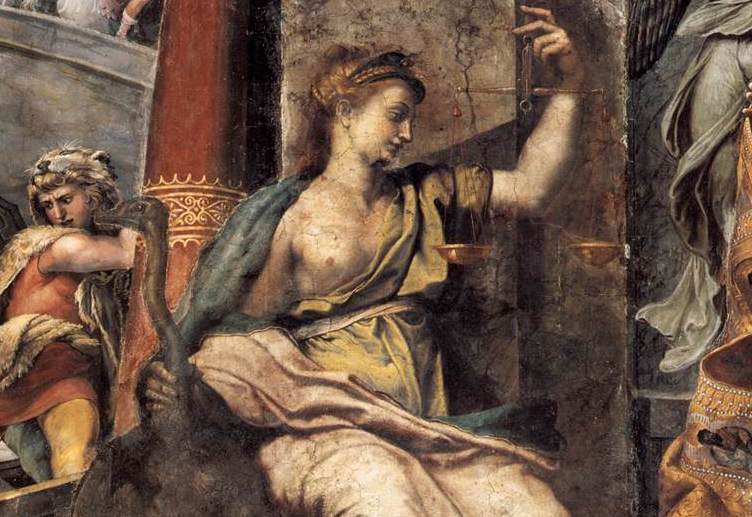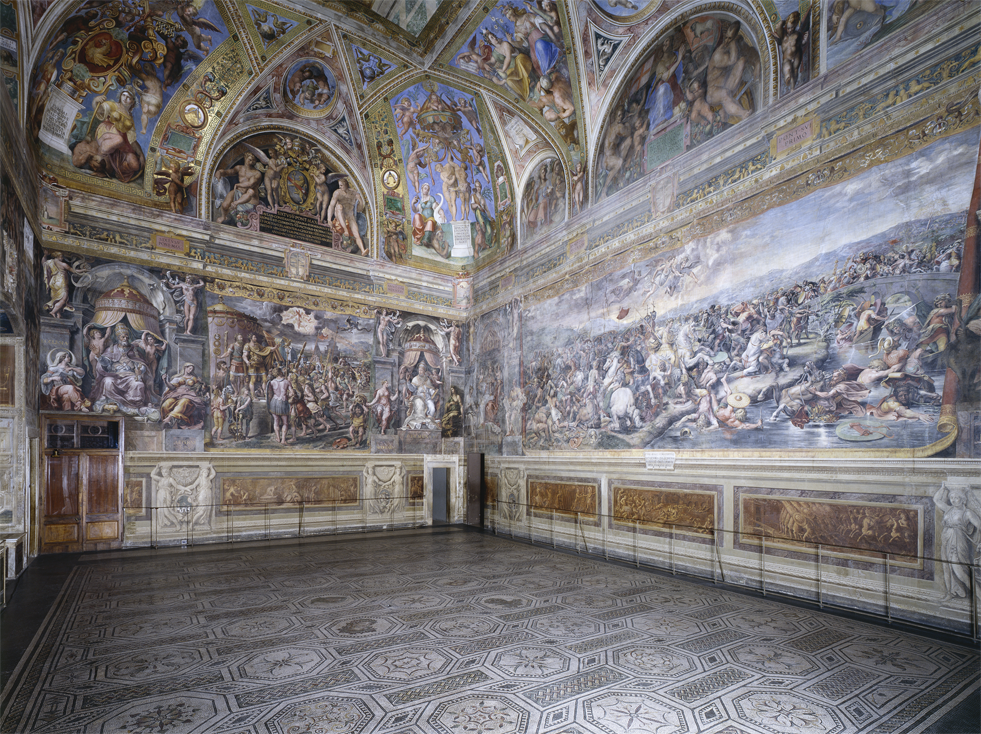Art World
The Vatican Discovers New Paintings by Raphael Hidden in Plain Sight—Right on Its Walls
The works were previously attributed to the master's workshop.

The works were previously attributed to the master's workshop.

Henri Neuendorf

It’s not every day that you find a new Raphael lying around, but such is life in the Vatican. Experts have discovered that Italian Renaissance paragon Raphael had a key role in painting the Room of Constantine in the papal apartments after a restoration yielded clear evidence of the master’s hand. It was previously thought that the magnificent reception room was painted by the artist’s workshop after the Raphael sketched in general outlines, as the artist was thought to have died before its completion. Not so, Vatican conservators now believe.
Citing a YouTube video posted by the Vatican’s press office, the Italian newspaper La Stampa reported that the allegorical female figures of the virtues of friendship and justice are indeed the work of Raphael.
“By analyzing the painting, we realized that it is certainly by the great master Raphael,” restorer Fabio Piacentini said. “He painted in oil on the wall, which is a really special technique. The cleaning and removal of centuries of previous restorations revealed the typical pictorial features of the master.”

The Room of Constantine in the papal apartments in the Vatican. Photo: courtesy of the Vatican Museum.
Arnold Nesselrath, art historian and head of technical and scientific research at the Vatican Museums, added, “We know from 16th-century sources that Raphael painted two figures in this room as tests in the oil technique before he died. According to the sources, these two oil painted figures are of a much higher quality than the ones around them.”
“Raphael was a great adventurer in painting and was always trying something different,” he explained. “When he understood how something worked, he sought a fresh challenge. And so, when he arrived in the largest room of the papal apartment, he decided to paint this room in oil, but he managed to paint only two figures, and his students continued in the traditional method, leaving only these two figures as autographs of the master.”
In 1509, Raphael was commissioned to paint four rooms in the papal residences, now known as the Raphael Rooms. The Room of Constantine—the largest—depicts four episodes of the life of the first Roman emperor to recognize the Christian faith and grant freedom of worship. The paintings depict the defeat of paganism and the triumph of the Christian religion.
Two chalk drawings by the Italian Renaissance master have sold for $48 million (at Christie’s London in 2009) and $47.8 million (at Sotheby’s London in 2012), according to the artnet Price Database.